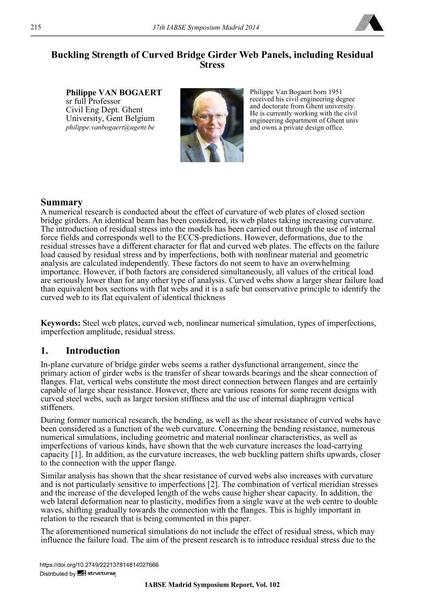Buckling Strength of Curved Bridge Girder Web Panels, including Residual Stress

|
|
|||||||||||
Bibliographic Details
| Author(s): |
Philippe Van Bogaert
|
||||
|---|---|---|---|---|---|
| Medium: | conference paper | ||||
| Language(s): | English | ||||
| Conference: | IABSE Symposium: Engineering for Progress, Nature and People, Madrid, Spain, 3-5 September 2014 | ||||
| Published in: | IABSE Symposium Madrid 2014 | ||||
|
|||||
| Page(s): | 215-222 | ||||
| Total no. of pages: | 8 | ||||
| Year: | 2014 | ||||
| DOI: | 10.2749/222137814814027666 | ||||
| Abstract: |
A numerical research is conducted about the effect of curvature of web plates of closed section bridge girders. An identical beam has been considered, its web plates taking increasing curvature. The introduction of residual stress into the models has been carried out through the use of internal force fields and corresponds well to the ECCS-predictions. However, deformations, due to the residual stresses have a different character for flat and curved web plates. The effects on the failure load caused by residual stress and by imperfections, both with nonlinear material and geometric analysis are calculated independently. These factors do not seem to have an overwhelming importance. However, if both factors are considered simultaneously, all values of the critical load are seriously lower than for any other type of analysis. Curved webs show a larger shear failure load than equivalent box sections with flat webs and it is a safe but conservative principle to identify the curved web to its flat equivalent of identical thickness |
||||
| Keywords: |
residual stress Steel web plates curved web types of imperfections imperfection amplitude non-linear numerical simulation
|
||||
